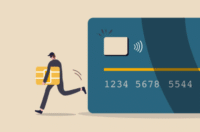Key Takeaways:
- Gain insight into effective management and recovery strategies for concussions.
- Understand the role of healthcare professionals in guiding recovery.
- Explore contributing factors and preventive measures for concussions.
Table of Contents:
- Understanding Concussions: A Brief Overview
- Symptoms and Early Identification
- Immediate Steps to Take Post-Injury
- The Role of Medical Professionals in Recovery
- Rehabilitation Strategies for Effective Healing
- Long-Term Implications and Monitoring
- Preventive Measures to Reduce Risks
- Success Stories in Concussion Recovery
Understanding Concussions: A Brief Overview
Concussions, a frequent form of traumatic brain injury, occur when a substantial impact on the head or body causes the brain to shift rapidly inside the skull. It can result in a temporary alteration of brain function, affecting memory, balance, and coordination. Recognizing these changes is vital, although they can sometimes be subtle or delayed, complicating timely diagnosis. Recognizing when to pursue expert assistance can significantly change outcomes. As advocates of concussion treatment, healthcare professionals stress the importance of understanding these foundational aspects as they lay the groundwork for effective management and recovery.
Table of Contents
Variability in how concussions manifest between individuals means symptoms can range from mild to severe. Some might include headaches or dizziness, while others may experience confusion or visual disturbances. Personalized experiences highlight the need for customized care. Learning more about these injuries from trusted resources can provide clarity and equip individuals to handle concussions more effectively.
Symptoms and Early Identification
Prompt identification of concussion symptoms is crucial, not just for the individual’s immediate well-being but also to prevent prolonged or chronic health issues. Typical symptoms can be diverse, including mood changes like irritability and depression, physical symptoms such as vomiting or sensitivity to light, and cognitive symptoms involving concentration or memory challenges. Recognizing these early following a head injury can significantly shape the recovery trajectory. However, due to the brain’s complexity, no two concussions are identical, and symptoms might change over time. This variability could complicate initial recognition, making persistent monitoring and self-reporting essential in effective symptom management.
Immediate Steps to Take Post-Injury
When a concussion is suspected, initiating immediate care can make a substantial impact on recovery. Essential actions include ceasing all physical and mental activities immediately. Reducing strain on an injured brain cannot be overstated, as rest is crucial during the initial recovery period. Moreover, engaging with screens, such as phones or computers, should be minimized to reduce cognitive load. Establishing a calm environment, free from sensory stimulation, facilitates the initial healing process. Always prioritize immediate consultation with medical professionals to confirm the concussion and tailor the approaching healing plans.
The Role of Medical Professionals in Recovery
Medical professionals, particularly those specialized in neurological health, are pivotal in safely managing a concussion’s trajectory. Diagnosis usually begins with a thorough assessment involving various tests to check the brain’s functioning across domains like memory, balance, and vision. In broader terms, recovery isn’t a solo journey but involves a collective effort from neurologists, therapists, and primary care physicians. These experts utilize comprehensive knowledge and rigorous methods to guide the patient in understanding their condition and plotting a customized path to recovery. Additionally, scheduled follow-ups are integrated to monitor any evolving symptoms, allowing for timely adjustments in the treatment plan.
Rehabilitation Strategies for Effective Healing
Rehabilitation after a concussion is multifaceted, often involving a gradual reintegration of both cognitive and physical activities. Key strategies harness the benefits of progressive physical exercises that can help the brain recover. While initial post-injury directives historically recommended strict rest, emerging perspectives suggest that light and supervised physical activity might aid recovery by promoting blood flow to the brain. Cognitive therapies also form a crucial part of treatment, aiming to rectify issues related to memory, concentration, and problem-solving skills. Resources present comprehensive insights on effective methodologies pivotal for healing.
Long-Term Implications and Monitoring
While many individuals recover fully within weeks, some might grapple with symptoms persisting much longer. These long-term effects warrant ongoing monitoring and potentially continuous management. Chronic headaches, mood variations, and cognitive lags characterize their presence and pose substantial challenges to daily functioning. An understanding of Chronic Traumatic Encephalopathy (CTE), a severe condition arising from repeated brain traumas, underscores the critical need for comprehensive long-term assessment. Structured medical oversight helps detect emerging concerns, enabling timely intervention that can preempt or address complications.
Preventive Measures to Reduce Risks
Preventive measures can significantly lower the likelihood of concussions, particularly in environments like sports and recreational activities where these injuries frequently happen. Utilizing protective equipment, including helmets and mouth guards, is a frontline defense that cannot be overstated. These tools, when properly used, mitigate impacts that could lead to concussions. Additionally, public education on understanding and recognizing concussion risk factors plays an instrumental role. It drives community awareness and encourages adherence to safety protocols. In sports, ongoing revisions of rules to minimize the risk of injury reflect a proactive stance on safety enhancement.
Success Stories in Concussion Recovery
Success stories from those who have effectively navigated their concussion recovery offer hope and invaluable insights into the healing process. These narratives often highlight diligent adherence to recovery protocols and the resilience of individuals who championed patience and persistence. Athletes, for instance, often serve as ambassadors of recovery resilience, demonstrating the possibility of returning to peak performance through widely adopted evidence-based treatments and personal commitment. Sharing these stories publicly celebrates the individuals and inspires others undertaking similar recovery journeys, underscoring the importance of support and well-guided health care.

















